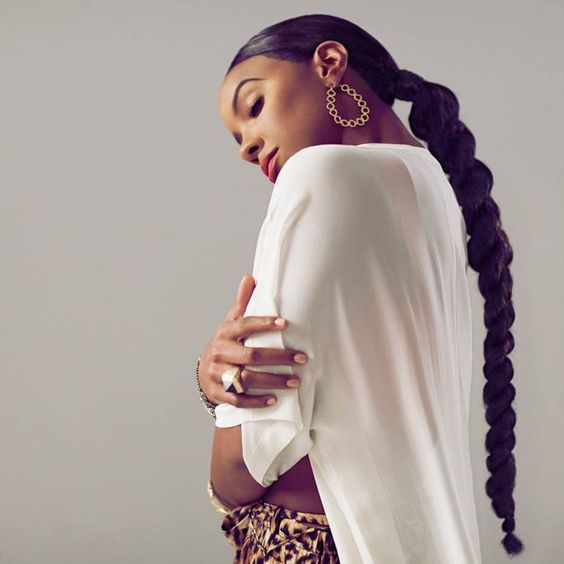How to Style a Frontal Ponytail Wig Like a Pro?

Frontal ponytail wigs have revolutionized the hairstyling world, offering an effortless way to achieve a sleek, polished look with minimal effort. These wigs provide versatility, allowing you to style your hair in numerous ways while maintaining a natural appearance. Whether you’re a wig enthusiast or a professional hairdresser, mastering the art of styling a frontal ponytail wig can significantly elevate your hair game, giving you the confidence to experiment with different looks.
Choosing the Right Frontal Wig
Human Hair Lace Frontals vs. Synthetic Options
When it comes to frontal wig, the choice between human hair and synthetic hair is paramount:
- Human Hair Lace Frontals: These wigs offer the most natural look and feel. They can be styled with heat tools, dyed, and treated just like your natural hair. Human hair wigs are durable and, with proper care, can last a long time. They are, however, more expensive than synthetic options.
- Synthetic Wigs: These are more affordable and often come pre-styled, which can save you time. Modern synthetic wigs can look very natural, but they are less versatile in terms of styling and heat resistance. They may not last as long as human hair wigs but are a great option for those looking to experiment with different styles without a significant investment.
Benefits of an HD Frontal
An HD (High Definition) frontal is made with a finer lace material that blends seamlessly with all skin tones, providing an undetectable hairline. The benefits of an HD frontal include:
- Natural Appearance: The ultra-thin lace melts into the scalp, making the hairline appear more natural.
- Versatility: Perfect for styles that expose the hairline, such as ponytails and updos.
- Comfort: The lightweight lace is comfortable to wear and causes less irritation to the scalp.
Preparing Your Natural Hair

Cleansing and Conditioning
Preparing your natural hair properly is the foundation for a flawless wig installation:
- Cleansing: Use a sulfate-free shampoo to thoroughly cleanse your hair and scalp. This removes any buildup that could interfere with the wig’s adhesive or cause irritation.
- Conditioning: Follow with a deep conditioner to hydrate and strengthen your hair. A leave-in conditioner can provide additional moisture and protection.
Braiding Techniques for a Flat Base
Creating a flat base is essential for a natural look and a comfortable fit:
- Cornrows: Braid your hair into small, tight cornrows that lie flat against your scalp. This technique is effective for keeping your hair compact and providing a secure foundation for the wig.
- Beehive Pattern: Alternatively, you can braid your hair in a beehive pattern. This method works well for longer hair, distributing it evenly and reducing bulk.
Securing the Frontal Wig
Importance of a Snug Fit
A snug fit ensures your wig looks natural and stays in place throughout the day:
- Adjustable Straps and Combs: Most wigs come with adjustable straps and combs to help secure the wig to your head. Adjust these components to achieve a tight yet comfortable fit.
- Wig Cap: Wear a wig cap that matches your skin tone to further secure your natural hair and provide a seamless base for the wig.
Using Adhesive or Glueless Methods
Choosing between adhesive and glueless methods depends on your preference and how long you plan to wear the wig:
- Adhesive Methods: Lace glue and tape provide a strong, long-lasting hold, making them ideal for extended wear. Apply the adhesive evenly along your hairline, allowing it to become tacky before pressing the lace down.
- Glueless Methods: For a temporary hold, use the adjustable straps and combs within the wig. This method allows you to remove the wig easily and is ideal for those who frequently change their hairstyles.
Creating the Perfect Ponytail Base

Positioning the Ponytail
The placement of your ponytail sets the tone for the entire look:
- High Ponytail: Positioning the ponytail high on the crown of your head creates a youthful, energetic look.
- Mid-Level Ponytail: A ponytail at the back of your head is classic and suitable for any occasion.
- Low Ponytail: Placing the ponytail at the nape of your neck gives a sophisticated, elegant appearance.
Ensuring Smoothness and Avoiding Bumps
Achieving a smooth ponytail requires attention to detail:
- Brush Thoroughly: Use a paddle brush to detangle the wig hair and smooth it back into the desired ponytail position.
- Fine-Tooth Comb: After brushing, use a fine-tooth comb to ensure the hair is smooth and free of bumps. This step is crucial for a sleek, polished look.
- Elastic Bands: Secure the ponytail with a strong elastic band that matches the wig hair color to maintain a cohesive look.
Styling Tools and Products You’ll Need
Brushes, Combs, and Elastics
The right tools are essential for achieving a professional finish:
- Paddle Brush: Ideal for detangling and smoothing large sections of hair.
- Fine-Tooth Comb: Perfect for creating smooth, bump-free styles.
- Elastic Bands: Use strong, durable elastics to secure the ponytail. Choose bands that blend with your wig color for a seamless look.
Heat Protectants and Styling Gels
Protect your wig hair from heat damage and ensure a sleek finish:
- Heat Protectant Spray: To avoid damage, carefully apply a heat shield before using heat-styling tools and maintain the integrity of the wig hair.
- Styling Gels: Use gels to smooth flyaways and add shine. Choose gels that provide a strong hold without flaking.
Achieving a Sleek Ponytail

Straightening the Hair for a Polished Look: For a polished ponytail, straighten the wig hair using a flat iron. Work in small sections to ensure every strand is straight and smooth.
Using a Flat Iron for Sleekness: Run the flat iron through the ponytail to enhance its sleekness. This step is important for achieving a professional, glossy finish.
Adding Volume and Body
Techniques for a Fuller Ponytail
Create the illusion of a fuller ponytail with these techniques:
- Teasing: Gently tease the hair at the crown before pulling it back into a ponytail. This adds volume and lifts to the overall look.
- Layering: Cut the wig hair into layers to create movement and fullness within the ponytail.
Using Extensions or Wefts for Added Volume
For an extra voluminous ponytail, consider adding extensions:
- Clip-In Extensions: Clip-in extensions can be easily added to the base of the ponytail for instant volume and length.
- Wefts: Sew or clip wefts into the wig base for a more permanent solution. Blend the extensions with the natural wig hair for a seamless look.
Finishing Touches
Adding Shine and Hold: Finish your style with a shine spray to add luster and a light-hold hairspray to keep everything in place.
Accessories to Elevate the Look: Enhance your ponytail with accessories like hair cuffs, ribbons, or decorative pins for a unique and stylish touch.
Conclusion

Frontal ponytail wigs offer unparalleled versatility and style options, enabling you to use your creativity and achieve a polished look effortlessly. With the right techniques and care, you can style your frontal ponytail wig like a pro, embracing the confidence and elegance that comes with every swing of your sleek ponytail. Experiment with different styles and find what makes you feel fabulous!









